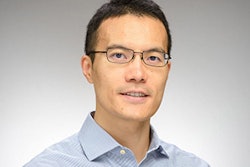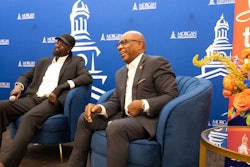 Memorandum of Understanding on Internships was signed by Assistant Secretary Evan Ryan (seated right) and Under Secretary of North American Affairs Sergio Alcocer (seated left). (Photo courtesy of the U.S. Department of State)
Memorandum of Understanding on Internships was signed by Assistant Secretary Evan Ryan (seated right) and Under Secretary of North American Affairs Sergio Alcocer (seated left). (Photo courtesy of the U.S. Department of State)
While acknowledging that internship opportunities that bring Mexican students to the U.S. and those that send Americans to Mexico are not new, officials say the initiative represents an effort to position educational exchange between the two nations as a workforce priority to help make North America “the most competitive and dynamic region” in the global economy.
“Increasing educational exchange opportunities between the United States and Mexico is essential to develop the regional workforce,” said a joint U.S. and Mexico statement issued by the U.S. State Department.
“This [memorandum of understanding] supports the direction we’re going in right now, which is to try and increase specifically professional skills development within the context of our already ongoing bilateral relationship,” said Robin Lerner, the U.S. Deputy Assistant Secretary of State for Private Sector Exchange.
Assigned to the State Department’s Bureau of Educational and Cultural Affairs, Lerner manages the Exchange Visitor Program, which annually brings roughly 300,000 foreign citizens to the United States to study, develop skills and teach. Typically, foreign citizens qualify for and obtain the State Department-issued J-1 visa to gain entry to the U.S.
Lerner explained that under the federal government’s purview there exists “a very robust array of programs between Mexico and the United States” that cultivates language learning, cultural exchange, and other educational benefits. The new program is designed to “really specifically create tools for young people to develop a 21st century workforce [whose participants] can work in each other’s countries,” she said.
“A lot of this is about learning language skills; it’s about understanding the language of commerce, or business, in each other’s countries; and it’s about making specific connections with the private sector and academia toward [the industries that are] going to be growing in these countries,” Lerner noted.















